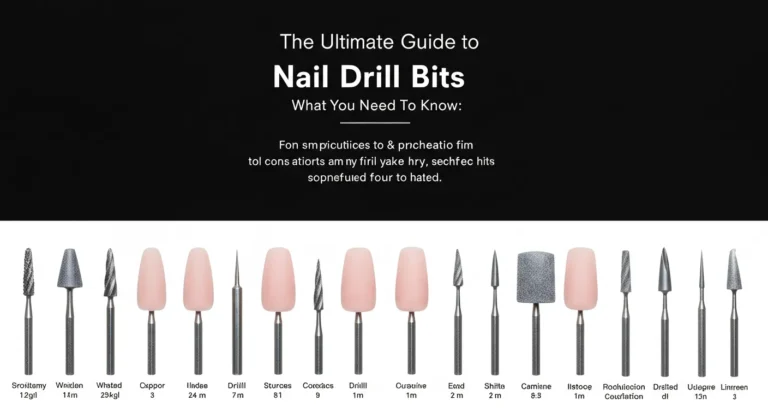Anti-Fungal Nail Polish: Protect Your Nails from Infections
Introduction
Are you tired of unsightly nail fungus ruining your perfect manicure? Do you dream of showcasing stunning nail art without worrying about infection? Then you’ve come to the right place! Today, we’re diving deep into the world of anti fungal nail polish, your secret weapon against stubborn nail infections. This comprehensive guide will equip you with the knowledge and tools to keep your nails healthy, strong, and looking their absolute best.
What Is Anti-Fungal Nail Polish?
Anti-fungal nail polish is a specialized type of nail polish formulated with active ingredients designed to combat fungal infections of the nails (onychomycosis). Unlike regular nail polish, it contains medicinal components that penetrate the nail plate to inhibit the growth of fungi. These active ingredients can vary, but common ones include ciclopirox, amorolfine, and undecylenic acid. These polishes are often recommended as a first-line treatment for mild to moderate fungal infections, sometimes used in conjunction with other antifungal treatment, nail infections, protective nail polish methods. It’s crucial to note that anti-fungal nail polish is not a quick fix; consistent application is key to achieving successful results.
Beginner’s Guide to Anti-Fungal Nail Polish
If you’re struggling with a nail fungus, anti-fungal nail polish offers a convenient and discreet treatment option. Unlike oral medications, it’s applied topically, directly to the affected nail. However, it’s important to understand that it works best on mild to moderate infections. Severe cases often require a combination of treatments, including oral antifungals prescribed by a dermatologist. Before starting any treatment, always consult your doctor or podiatrist to ensure accurate diagnosis and appropriate treatment. Choosing the right anti fungal nail polish involves looking at the active ingredient, ease of application, and overall cost. Some products also offer added benefits like strengthening and moisturizing properties.
Nail Prep Checklist Before Applying Anti-Fungal Nail Polish
Before applying your anti fungal nail polish, proper nail preparation is crucial for optimal results. Follow these steps for best results:
- 💅 Cleanse: Gently cleanse your nails with warm soapy water and a soft-bristled brush to remove dirt and debris.
- 🧽 File: Carefully file down any thickened or discolored areas of the affected nail. Avoid excessive filing to prevent discomfort.
- ✨ Dry Thoroughly: Ensure your nails are completely dry before applying the anti fungal nail polish. Moisture can interfere with the product’s effectiveness.
- 🧴 Optional: Cuticle Oil: Apply a small amount of cuticle oil to moisturize the surrounding skin.
How to Apply Anti-Fungal Nail Polish – Step-by-Step
Step 1: Shake Well
Shake the bottle of anti fungal nail polish vigorously to ensure the active ingredients are evenly distributed.
Step 2: Thin Coats
Apply a thin, even coat of the anti fungal nail polish to the entire surface of the affected nail. Avoid thick application, as this can hinder penetration.
Step 3: Allow to Dry
Allow each coat to dry completely before applying the next. This typically takes a few minutes, depending on the formulation. Avoid touching or bumping your nails while they’re drying.
Step 4: Repeat Application
Follow the product instructions regarding the frequency of application. Most anti fungal nail polish requires daily or every-other-day application for several weeks or even months to see noticeable improvements.
Step 5: Persistence is Key!
Remember, consistency is paramount. Even if you see improvements, continue using the anti fungal nail polish as directed to prevent recurrence.
Best Practices & Expert Tips
- Early Intervention: Catching nail fungus early can significantly improve treatment outcomes.
- Hygiene: Maintain good hygiene practices, especially when using community showers or nail salons.
- Thin Coats are Best: Avoid applying thick coats to allow for proper penetration of the active ingredients.
- Proper Nail Care: Keep your nails trimmed and avoid harsh chemicals.
- Professional Guidance: Consulting a podiatrist or dermatologist can help determine the best course of action for specific cases.
List of Helpful antifungal treatment, nail infections, protective nail polish Products
This section would list specific products – remember to adhere to FTC guidelines for endorsements and affiliate links if you use them. Include a brief description and pros/cons for each product.
FAQs About Anti-Fungal Nail Polish
- Q: How long does it take to see results with anti-fungal nail polish? A: It varies, but you might notice improvements in several weeks, though complete clearing can take several months.
- Q: Can I use anti-fungal nail polish with regular nail polish? A: It’s generally not recommended to layer regular polish over anti-fungal polish because this can prevent the active ingredients from penetrating the nail.
- Q: Is anti-fungal nail polish safe for pregnant women? A: Always consult your doctor before starting any new medication or treatment during pregnancy.
- Q: What are the side effects of anti-fungal nail polish? A: Generally well-tolerated. Some may experience mild skin irritation around the nail. Consult your doctor if you experience any unusual side effects.
- Q: My nail infection doesn’t seem to be improving with anti-fungal polish. What should I do? A: Consult a doctor or podiatrist immediately. Your infection may require a stronger treatment.
Conclusion
Protecting your nails from fungal infections is vital for maintaining their health and beauty. Anti-fungal nail polish offers a user-friendly and effective approach to treat mild to moderate nail infections. By following the steps outlined in this guide and practicing proper nail care, you can keep your nails strong, healthy, and looking their best! Share your thoughts and experiences in the comments below! Don’t forget to pin this article for later reference!




